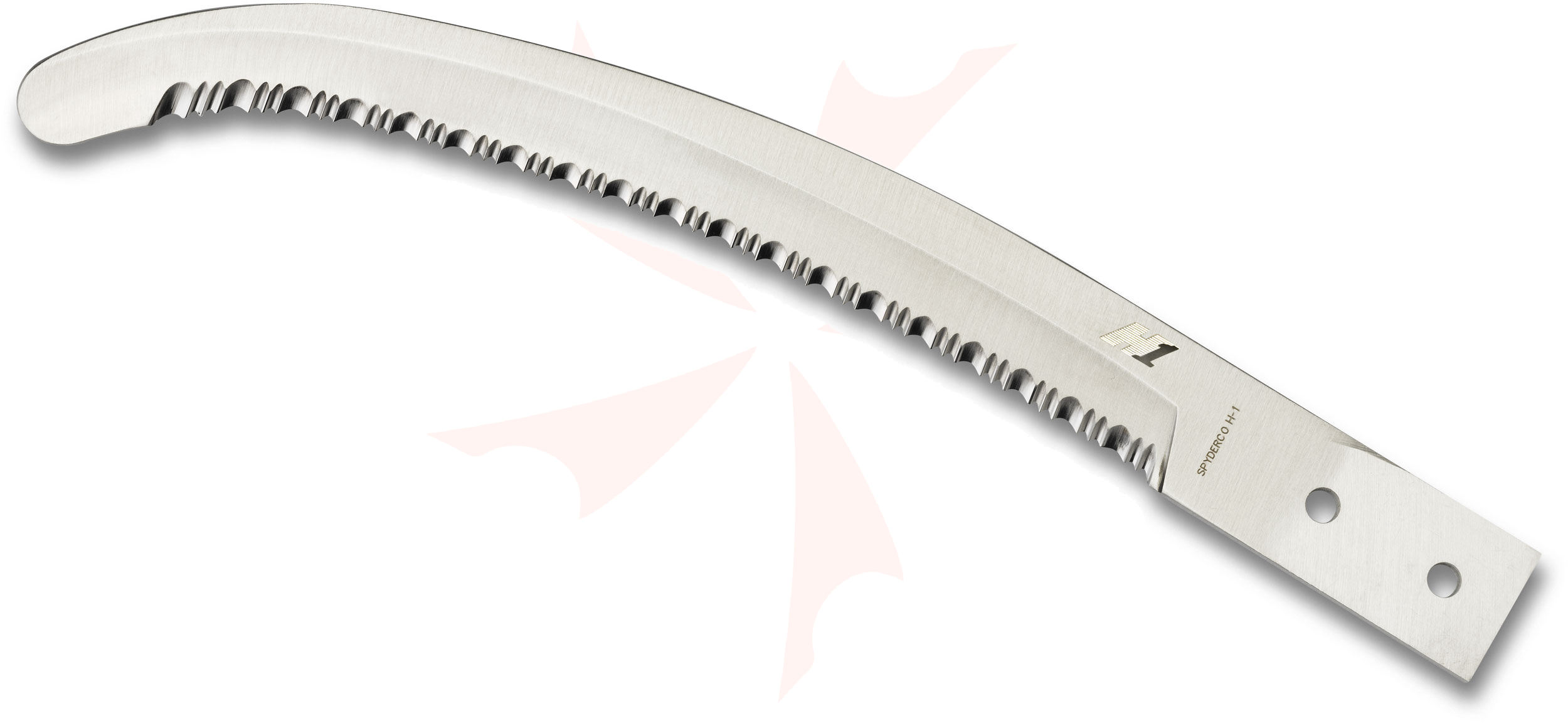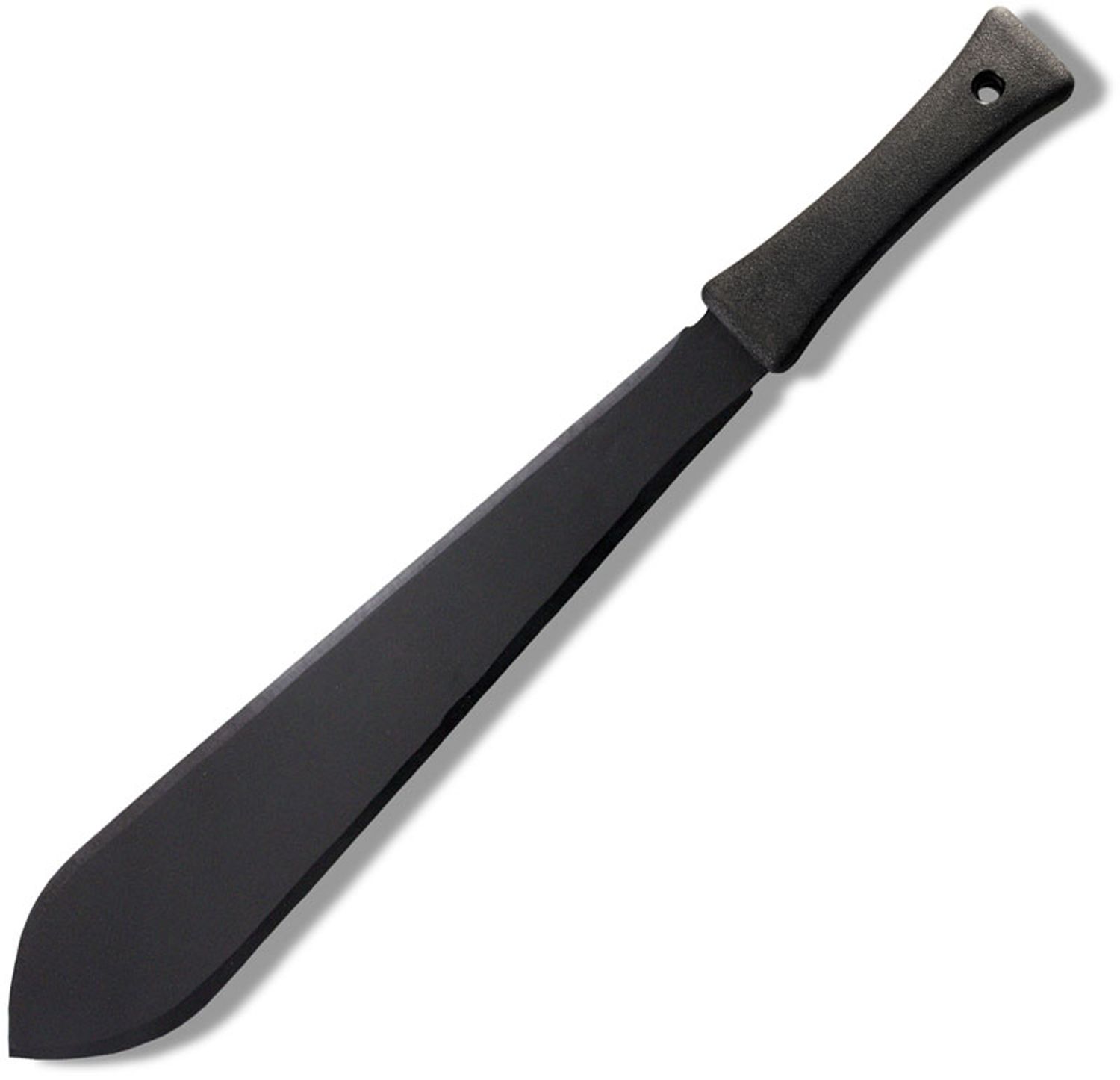There was mention of some different ideas earlier, a PE variation possibility, weight forward, with SE, but being able to use the back of the blade to press on with the other side. It may be possible to combine some of this. I'm just thinking out loud, throwing ideas on the wall to see what may stick. Here is one possibility:
Straight spine in line with the handle, unsharpened. This would allow for easily pressing anywhere along the spine. Provided as unsharpened, but straight, it would also be relatively easy to sharpen a PE all along the spine for those who need that. Or, if someone wanted both, they could leave a flat spot for pressing and sharpen the rest of the spine. Or, someone could even make a combination of sections for chop, press, and slice by varying the angles they grind.
Weight forward for swinging. With the straight spine, this would provide a negative angle for the sharp edge, which could be SE, along with some belly as it turns to connect with the flat spine.
If the blade had a flat grind angle that was relatively constant up to the belly, that would also provide a wider spine at that location for more comfortable pressing in addition to some added weight towards the tip. A thicker spine towards the tip may also be useful for those wanting to add a a chop grind in that area. Not sure if that extra weight may be too much, though.
There was a similar drawing to this earlier, but with the bottom sharp edge of that drawing being straight. This would flip that so the straight section would be the spine.
Curiosity for those testing the addition of SE on a PE blade. The SE I have seen from Spyderco so far have been with the PE and the SE on only one side of the blade. It makes me wonder how the SE effectiveness would vary if the blade starts with PE on both sides before SE is added to one side. Just makes me go hmmm.

As for the handles, the two-piece replaceable is interesting, though there was mention of it maybe not being robust enough. I saw an image on another forum of an early Buck fixed blade. It used a pommel nut. I wonder if a variation of that may be adapted here, perhaps as a double nut with inner and outer threads inside of the outer pommel area. A center treaded tube could screw onto threads on the end of the tang. Outside of that, another ring with larger threads could screw onto the two-piece handle. This may provide for a more robust handle end that locks the pieces together.


 Stable Mules; Z-Max, Z-Wear, Magna Cut, Magna Max, SRS13, Rex 76, Rex T15.
Stable Mules; Z-Max, Z-Wear, Magna Cut, Magna Max, SRS13, Rex 76, Rex T15.
